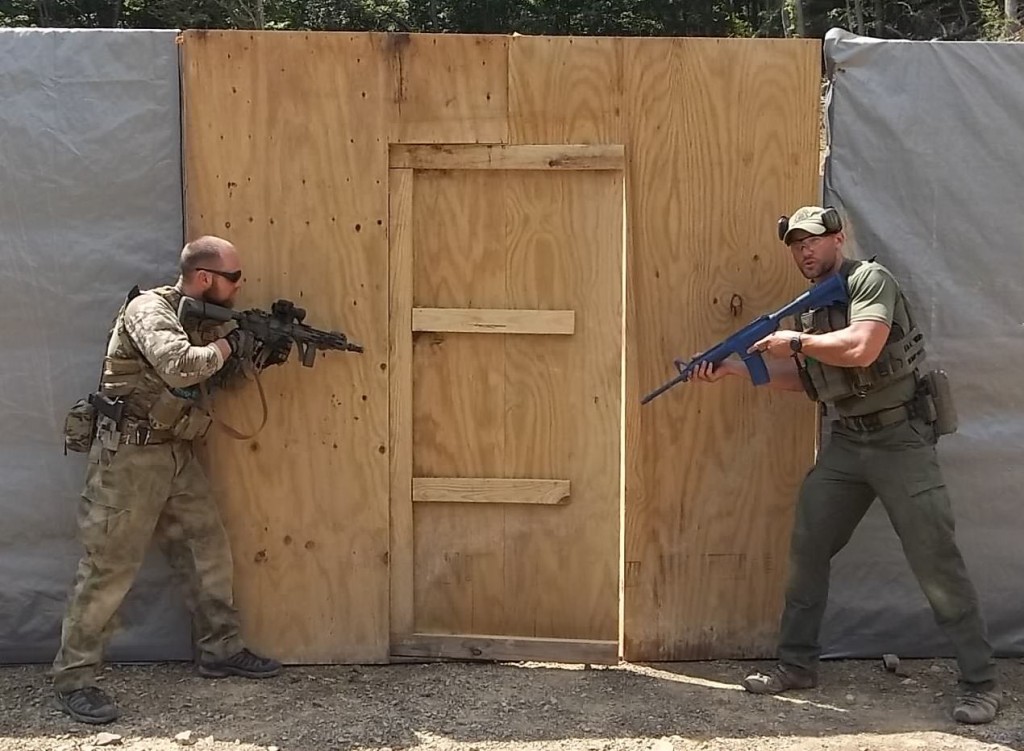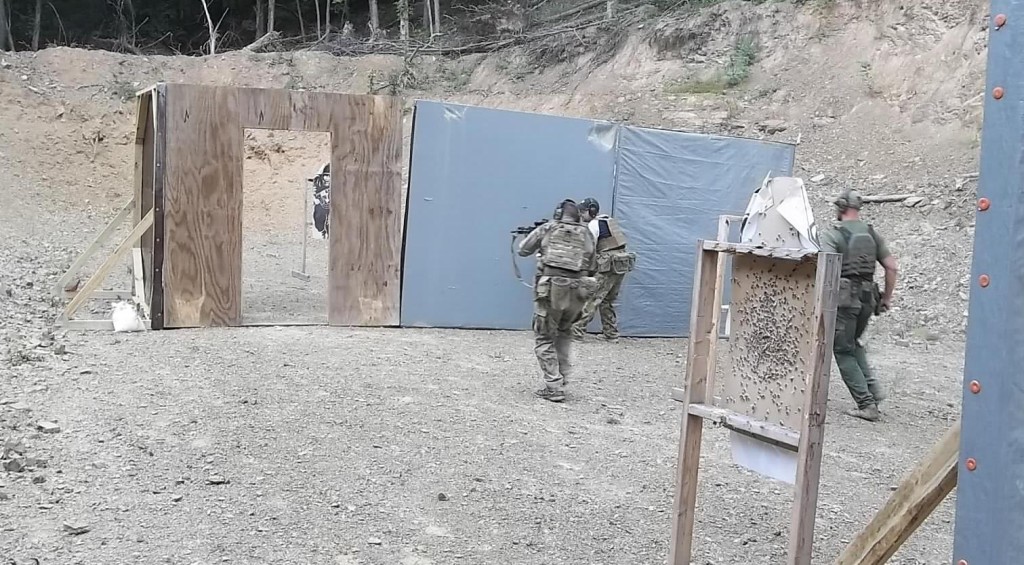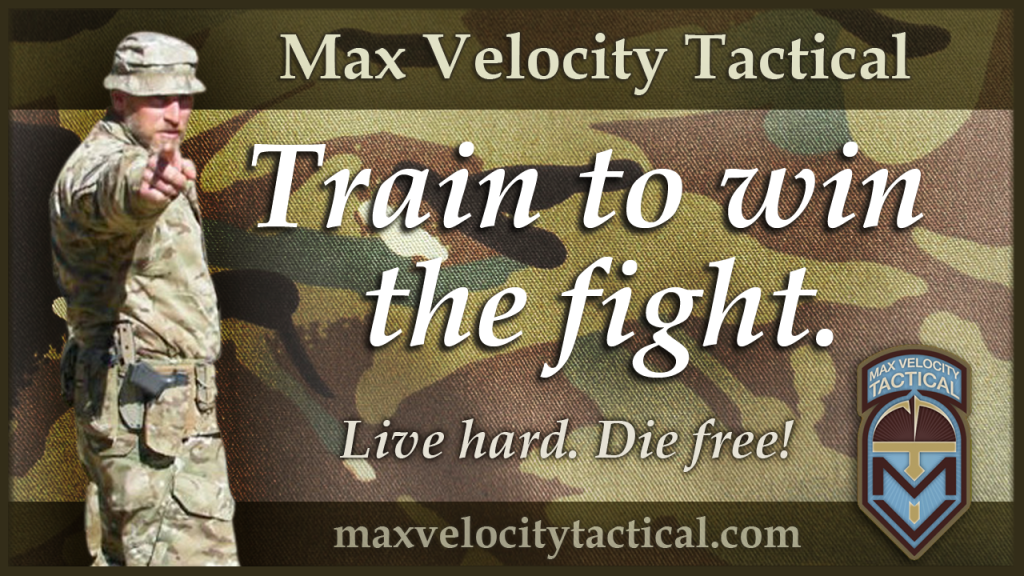Student Review: Citizen Close Combat (C3): Pinky
Introductory note from Max: even as I received this student review from Pinky, I was already discussing the C3 class among the Cadre. The initial idea of the C3 class was to provide a 2 day square range class that was attainable by those worried about PT levels. However, due in the main to Lee’s expertise, C3 has become something much more, much better, than that. I am short of time, headed up for the MVT Rifleman Challenge today, but I will post shortly about changes, and the C3 page will also be amended accordingly.
Summary:
1) C3 is going to become more of a specialized, higher level, class. Day 1 will have some of the basic weapon manipulation removed, allowing it to focus more on the subject matter (Tactical Entry CQB).
2) CTT will now become a requirement for C3. C3 will now be a follow on class in the same way that Combat Patrol (CP) is. These two classes will in effect become distinct equivalents, each focusing on different skill areas, but complementing each other. Thus, if only alumni are doing C3, we don’t have to focus on the day 1 CTT weapons manipulation skills as currently included on C3, which turned some of the alumni off a little (see the review below).
3) Once you have completed CTT, you can do one or both of the choice of Combat Patrol (CP) or Citizen Close Combat (C3). CP requires a greater level of PT and is focused in one direction, C3 requires less PT and is focused on urban/CQB/home defense skills. Having done CTT, you will have an understanding of buddy teams going into the class.
4) This means that we still don’t have an absolute beginners square range manipulation / basic rifle skills class. However, CTT is filling that role already. The issue for MVT is that many are afraid of CTT, because it involves a basic level of PT and takes place (final 2 days) in the woods. Training is training. If you want the training you need, you have to show up and get it.
5) As noted in some recent Student Reviews, CTT is a 3 day package that is available as a 4 day package, if you add the 1 day Rifle Skills class onto the front end of it (Thursday). For those of you worried about your skill levels, or wanting to being family members, so long as the have a familiarity with basic shooting, you can bring them on this class and it gives them 2 days on the square range before moving on to the tactical ranges for the final 2 days. In fact, often less training in a student is helpful, because there are fewer training scars to overcome. This is, in effect, the MVT basic training class.
6) Making CTT a 4 day class may raise objections from some. However, I will say this: given that you need the training, and don’t do this routinely, you simply have to make an event of it. It requires some travel and vacation days, for 4 days of excellent training. CTT will not be made a mandatory 4 days, it will remain a 3 day class, but you have the option of tacking the Rifle Skill class onto the front end if you feel the need for more weapons manipulation and fundamentals practice (yes!).
Citizen Close Combat (C3) Review, Pinky
A very short review on C3…in a few words, “well worth it” and “learned a LOT.”
As for training experience, I’ve done CRCD before it was Combat Team Tactics (CTT), then CTT, NODF, then Combat Patrol, followed by a VA-CUTT weekend over the past ~two years. Prior to MVT, I completed a few pistol and rifle “square range” classes with local trainers (police/SWAT background – relevant to C3).
As for the flow of the event…
Day one started with safety briefing then zero-check/adjustment. That was followed by basic weapon manipulation (stance, various re-loads, etc) then on to stoppages and malfunctions. Next was basic ready-up drills, single shot, cadence firing, stream firing on fixed targets. We completed the day with some various non-standard positions.
Day two continued with non-standard positions, moving to/from cover, and shooting while on the move (forward/diagonally, etc). We also did some basic rifle to handgun transitions, re-loading techniques, etc. The remainder of the day was the “fun stuff;” learning how to address rooms (closed door, open door, etc). We started with single person room clearing, then on to two-man, focusing on “fighting from the doorway.” This was a stark contrast from previous classes with a more “SWAT-like” approach.
We had all MVT alumni save for my Aussie friend, but he was able to jump right in with a few quick instructions (former Army). This was billed as an “Entry” class, but more comments on that later.
Overall thoughts on the class:
· Lee is an excellent instructor and knows his stuff. It was very obvious he has had real life experience and he did his best to share it with us. It is also pretty obvious he was in the Marines. As with all of MVT’s instructors I’ve met thus far, all provide a great blend of instructor, disciplinarian (if required) and motivator, all without talking down to anyone. Kudos to Max for finding the right people. All of these guys are able to up or down-level the training based on people’s abilities, another positive and the reason I’ve returned for more instruction.
· The first day was a great catch-up on previously taught techniques, etc. Given we had a class of alumni, it may have been a bit too fast/much for someone that has not taken an MVT class prior or was squared away on operating an AR. I made the comment that “if I brought my wife, this might have been a train-wreck” as with only basic working knowledge of an AR, she would have struggled. I understand Lee would have made adjustments accordingly.
· The second day was the “meat” of the weekend and provided an excellent foundation for future training. I learned a TON, but certainly do not feel like a Tier-1 operator and while we covered a lot of material, I think we maybe only scratched the surface. This foundation would serve anyone well that would need to protect your home, etc.
· As a thought for future classes, perhaps a 3-day “Entry” class to allow for the variety of skill levels, non-alumni, etc. might make sense. And possibly an “intermediate” class as a follow on? We worked up to two-man teams, so there is another whole world out there for 4-man, 8-man, etc, etc.
Lessons learned (outside of specific skills taught in class):
1. Be open-minded and ready to learn/absorb new things. Don’t be afraid to fail…I “died” at least once, maybe more, by simply not following instructions. This is a great way to learn vs. a real-life situation. Lee pointed out to me at one of my “death” experiences, “Man, you are sooooo totally screwed right now!” He stopped the drill, brought the class forward, explained the error, and we moved on.
2. Communication is KEY. Once the first round goes off, the bad guy knows you are there (or vice-versa). Talking at that point in an engagement is the least of your worries. This is critical, especially to identify where you are going, where there are additional doors, walls, etc. Unless you are so practiced that you know where you are both going without talking, you need to communicate.
3. Always SCAN, both for enemy an your buddy. Find your buddy and make sure he is “good to go” (I had to work in at least one USMC term in here given our instructor). No need to do a “Hokie-Pokey” 360 degree spin/scan (inside joke from class), but always be aware of where your buddy is and what he is doing.
Given this was the inaugural TC3 class, I anticipate some changes based on input from everyone and the fact that good instructors are always tweaking things. My critiques are very minimal as this was a very good class. I mentioned we had a class full of alumni, so I believe we did more “jumping right in” to live fire after basic instruction vs. “try it first” without going live. If we had someone that had never taken an MVT class, I believe we would have moved at a much slower pace.
If you are hesitating, don’t. Sign up and prepare to learn.



